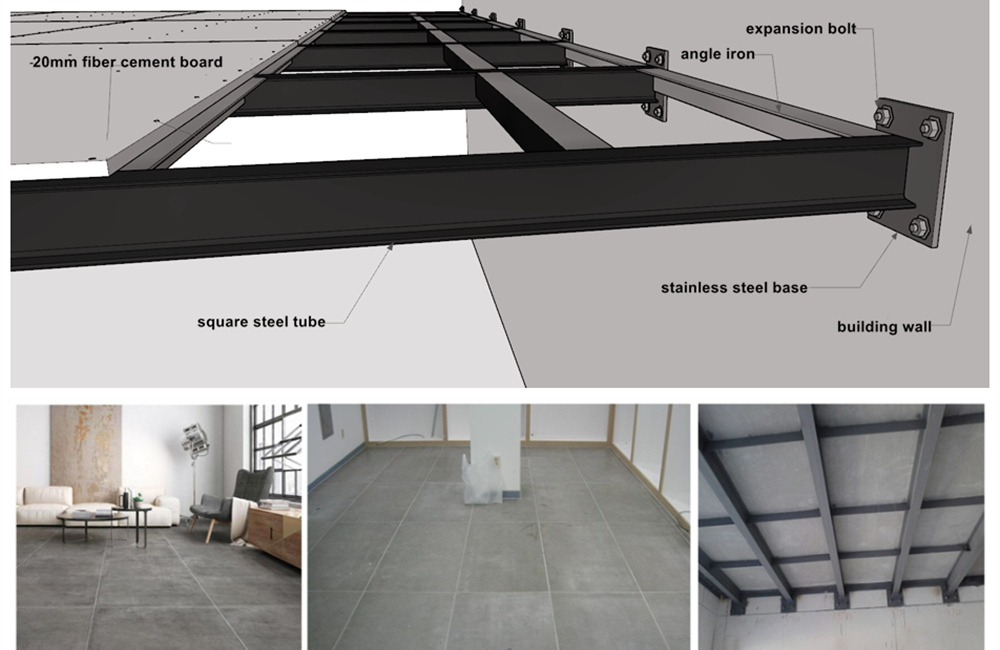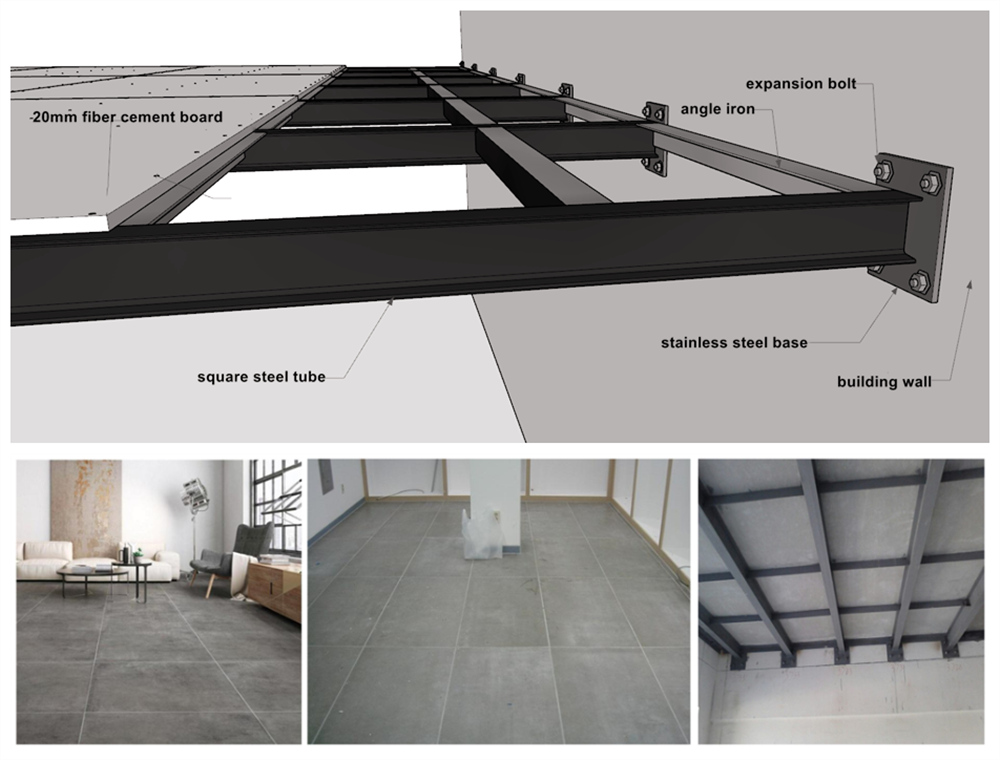
Floor Board Installation of Fiber Cement Boards
Installing fiber cement boards as floorboards involves specific considerations due to the load-bearing nature of floors. Fiber cement floorboards can be a durable and moisture-resistant option for certain applications, such as in wet areas like bathrooms.
Here's a guide to installing fiber cement floorboards:
Materials and Tools You'll Need
● Fiber cement floorboards
● Adhesive recommended for fiber cement
● Circular saw with a fiber cement blade or shears
● Measuring tape
● Carpenter's square
● Chalk line
● Level
● Safety goggles and a dust mask
● Notched trowel
● Spacers
● Primer and paint (if desired)
Preparation
Ensure the subfloor is properly prepared and leveled. Remove any debris, dust, or other materials. If the subfloor is concrete, ensure it's clean, dry, and free from moisture issues.
Layout and Measurement
Plan the layout of the fiber cement floorboards, taking into account the dimensions of the room and any obstacles.
Cutting
Measure and cut the fiber cement floorboards to fit the dimensions of the room using a circular saw with a fiber cement blade or specialized shears.
Floor Board Installation
1. The span is within 8m: 15H steel for the main beam, #10 channel beam, and #63 angle iron for the secondary beam.
2. No embedded parts shall be fixed with expansion bolts.
3. Abundant space can be used for upper and lower beam structures, space is not enough can be used for plane structure. Steel structure welding requirements: There must be at least three sides of the welding, the top surface can not be welded.
Floorboard Installation
1. Before laying the boards, the welding seam on the top surface must be polished flat and the welding spatter must be cleared away.
2. The longitudinal direction of the boards should be parallel to the main beam.
3. Any edge of the board shall not be suspended.
4. A gap of 3-5mm must be left between the boards.
5. The joint between the boards should be located in the center of the beam.
Nailing requirements
1. Select the countersunk head tapping screw, with the size of M5*45mm, nailing on the vice-keel (Angle iron).
2. Drill first and then nail, the nail hole should be bigger than the diameter of the nail.
3. Nailing starts from the center of the board and then hits outwards, and finally hits the side nails.
4. The nailing position of the side nail should be about 20mm from the edge of the board.
5. The nail distance is 300-600mm. Treatment of the joint: the joint can be injected with silicone sealant, or mortar can be used.
Follow-up Processing
1. Brushing waterproof coating, and then directly use.
2. Laying a wood floor or ceramic tiles
3. If desired, prime and paint the fiber cement floorboards with appropriate products. Follow the paint manufacturer's instructions.
4. Clean up any excess adhesive promptly to maintain a clean and finished appearance. Ensure the adhesive is suitable for use with fiber cement and suitable for specific applications (e.g., wet areas).
5. Regularly inspect the floorboards for signs of wear, damage, or moisture issues. Replace or repair as needed to maintain their integrity.
While fiber cement can be used in flooring applications, it is important to carefully consider the specific requirements of a project. We recommend always following the manufacturer's guidelines and recommendations for installing fiber cement floors.
If you're planning a remodel and need some inspiration, take a quick look at Sanle's product gallery and you'll probably find plenty of possibilities to consider.







